Related Research Articles

Galicia is an autonomous community of Spain and historic nationality under Spanish law. Located in the northwest Iberian Peninsula, it includes the provinces of A Coruña, Lugo, Ourense, and Pontevedra.

The province of A Coruña is the northwesternmost province of Spain, and one of the four provinces which constitute the autonomous community of Galicia. This province is surrounded by the Atlantic Ocean to the west and north, Pontevedra Province to the south and Lugo Province to the east.
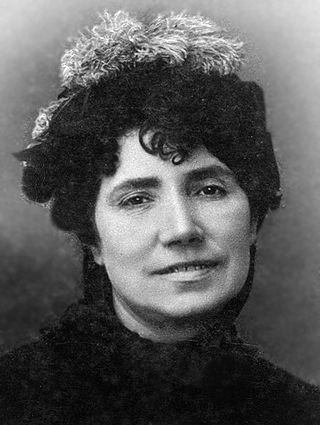
María Rosalía Rita de Castro, was a Galician poet and novelist, considered one of the most important figures of the 19th-century Spanish literature and modern lyricism. Widely regarded as the greatest Galician cultural icon, she was a leading figure in the emergence of the literary Galician language. Through her work, she projected multiple emotions, including the yearning for the celebration of Galician identity and culture, and female empowerment. She is credited with challenging the traditional female writer archetype.

A Coruña is a city and municipality in Galicia, Spain. It is Galicia's second largest city, behind Vigo. The city is the provincial capital of the province of A Coruña, having also served as political capital of the Kingdom of Galicia from the 16th to the 19th centuries, and as a regional administrative centre between 1833 and 1982.

Ricardo Carballo Calero, self-styled as Ricardo Carvalho Calero from 1981 onward, was a Spanish philologist, academic and writer. He was the first Professor of Galician Language and Literature at the University of Santiago de Compostela. He was a member of the Royal Galician Academy, the Lisbon Academy of Sciences, and also an honorary member of the Galician Language Association. He was one of the main theorists of contemporary Galician reintegrationism and his works on this field are considered a primary reference. Many consider Carballo Calero as one of the most prominent figures of the twentieth century Galician intelligentsia.
The Xunta de Galicia is the collective decision-making body of the government of the autonomous community of Galicia, composed of the President, the Vice-president(s) and the specialized ministers (Conselleiros).

The University of A Coruña is a Spanish public university located in the city of A Coruña, Galicia. Established in 1989, university departments are divided between two primary campuses in A Coruña and nearby Ferrol. The A Coruña campus is spread over three suburbs on the outskirts of A Coruña: Elviña and Zapateira and Oza.

The University of Vigo is a public university located in the city of Vigo in the Province of Pontevedra, Galicia, Spain. There are three campuses:

The University of Santiago de Compostela - USC is a public university located in the city of Santiago de Compostela, Galicia, Spain. A second campus is located in Lugo, Galicia. It is one of the world's oldest universities in continuous operation.
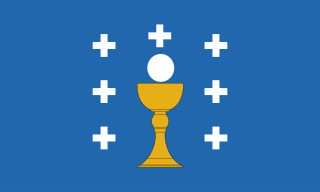
The Kingdom of Galicia was a political entity located in southwestern Europe, which at its territorial zenith occupied the entire northwest of the Iberian Peninsula. In the early 10th century, the Kingdom of Galicia was formed following the division of the Kingdom of Asturias after the death of Alfonso III in 910. His sons split the kingdom, with Ordoño II inheriting Galicia. While Galicia became a distinct political entity, it remained closely tied to the Leonese and Asturian realms through dynastic connections. Later, Ordoño II would integrate Galicia into the Kingdom of León when he inherited the latter. Though the Kingdom of Galicia had moments of semi-independence, it was typically seen as part of the Kingdom of León. Compostela became the capital of Galicia in the 11th century, while the independence of Portugal (1128) determined its southern boundary. The accession of Castilian King Ferdinand III to the Leonese kingdom in 1230 brought Galicia under the control of the Crown of Castile.

Narón is a municipality in northwestern Spain in the autonomous community of Galicia. It belongs to the comarca of Ferrol.
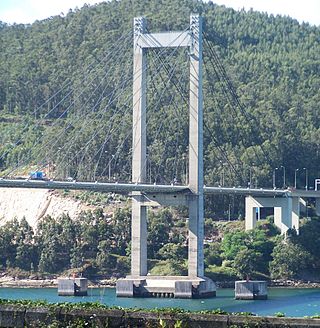
Galicia's two major economic poles are A Coruña and Vigo, with A Coruña in the lead, producing an estimated 33.2% of VAT receipts against 24.3% from Vigo. A third economic center is Santiago de Compostela, capital of Galicia. Other important cities are Ferrol and Pontevedra. In recent years the distance has grown between the interior provinces, Lugo and Ourense, which are more rural and less developed, and the coastal provinces, Pontevedra and A Coruña, particularly the areas situated along the axis of the A-9 Highway.
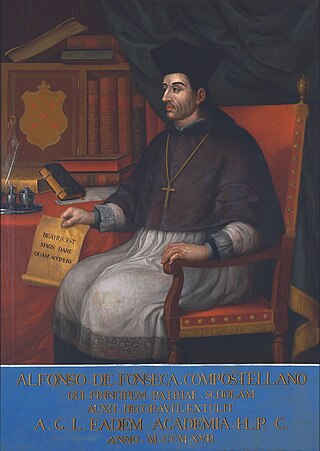
Alonso III Fonseca was a Galician archbishop and politician. He was Archbishop of Santiago de Compostela from 1507, and Archbishop of Toledo from 1523. He was a major supporter of the University of Santiago de Compostela.
Alvia is a high-speed train service in Spain offered by Renfe Operadora on long-distance routes with a top speed of 250 km/h (160 mph). The trains have the ability to use both Iberian gauge and standard gauge, which allows them to travel on the recently constructed high-speed lines for part of the journey before switching to the "classic" Iberian gauge network to complete it. Trains that run exclusively on high-speed tracks are branded AVE or Avant.
The Tour of Galicia is an annual cycling race held in Galicia, Spain. It was first held in 1933 and was held a further five times between 1934 and 1984. The tour did not take place from the outbreak of the Spanish Civil War in 1936, until the end of the Second World War in 1945. In 1986, it became a regular annual race. The final professional edition of the race was held in 2000. In 2002, after a year's hiatus, the race returned to the calendar as an amateur race.

The Royal Mint of Spain is the national mint of Spain. The FNMT-RCM is a public corporation that is attached to the Ministry of Economy.

Ferrol en Común is a grassroots movement and political coalition in the city of Ferrol, Galicia whose goal is to build a left-wing and participative political electoral alliance. FeC is supported by political parties like Anova-Nationalist Brotherhood (Anova-IN), United Left (EU) and the local circle of Podemos in the city of Ferrol.

En Marea was a political party and former political alliance integrated by Podemos, Anova, United Left of Galicia, and some municipal alliances that participated in the 2015 Spanish local elections. It was formed in November 2015 as an electoral coalition to contest the 2015 Spanish general election in Galicia. As part of the coalition agreement with Podemos, the name on the ballot paper for both the 2015 and 2016 general elections was Podemos–En Marea–Anova–EU.
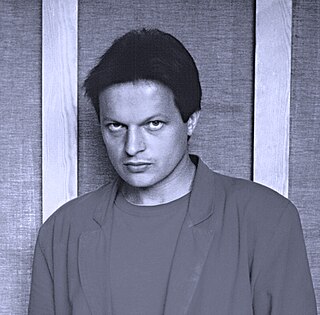
Xosé Artiaga Barreira, is a Galician painter, engraver, photographer and multimedia artist, as well as teacher of drawing.
References
- Pita Fernández, Ricardo Luís (1996). A Real Casa da Moeda de Xubia. Breve historia e catálogo das súas cuñacións (in Galician). Santiago de Compostela.
{{cite book}}: CS1 maint: location missing publisher (link) ISBN 84-89641-37-4 - Pita Fernández, Ricardo Luís (1999). Numismática galega. A moeda en Galicia e Galicia na moeda (in Galician). Santiago de Compostela.
{{cite book}}: CS1 maint: location missing publisher (link) ISBN 84-605-9958-2